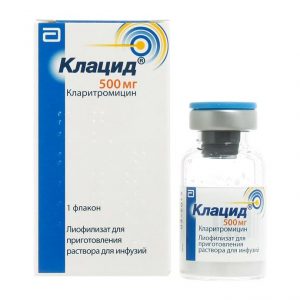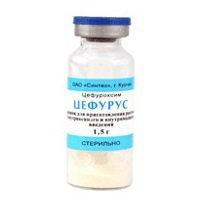Description
Release form
Capsules 250 mg. 6 capsules per blister of PVC / AL. 1 blister with instructions for use in a cardboard box.
Indications
Infectious and inflammatory diseases caused by drug-sensitive microorganisms
Infections of the upper respiratory tract and ENT organs (tonsillitis, sinusitis, tonsillitis, otitis media).
scarlet fever.
Lower respiratory tract infections (bacterial and SARS, bronchitis).
Urogenital tract infections (uncomplicated urethritis and / or cervicitis).
Infections of the skin and soft tissues (erysipelas, impetigo, secondarily infected dermatoses).
Lyme disease (borreliosis) for the treatment of the initial stage (erythema migrans).
Diseases of the stomach and duodenum associated with Helicobacter pylori (as part of combination therapy) (for tablets).
Use during pregnancy and lactation
During pregnancy, hemomycin is prescribed only when the expected benefit of the therapy to the mother outweighs the potential risk to the fetus.
If you need to use the drug during lactation, you should decide whether to stop breastfeeding while you are using the drug.
Special instructions for
If you miss one dose of the drug, you should take the missed dose as soon as possible, and the subsequent doses should be taken at intervals of 24 hours.
Azithromycin should be taken at least one hour before or two hours after taking antacids preparations.
Azithromycin should be used with caution in patients with mild to moderate hepatic impairment due to the possibility of developing fulminant hepatitis and severe liver failure.
In the presence of symptoms of impaired liver function, such as rapidly increasing asthenia, jaundice, dark urine, a tendency to bleeding, hepatic encephalopathy, drug therapy should be discontinued and a study of the functional state of the liver should be carried out.
In mild to moderate impaired renal function (CC greater than 40 ml / min), azithromycin therapy should be administered with caution under the supervision of renal function.
As with the use of other antibacterial drugs, patients with azithromycin should be regularly examined for the presence of unresponsive microorganisms and signs of superinfection, including fungal.
The drug should not be used for longer courses than indicated in the instructions, since the pharmacokinetic properties of azithromycin make it possible to recommend a short and simple dosing regimen.
There is no data on the possible interaction between azithromycin and derivatives of ergotamine and dihydroergotamine, but due to the development of ergotism with the simultaneous use of macrolides with derivatives of ergotamine and dihydroergotamine, this combination is not recommended.
With prolonged use of azithromycin, pseudomembranous colitis caused by Clostridium difficile may develop, both in the form of mild diarrhea and severe colitis. With the development of antibiotic-associated diarrhea while taking the drug, as well as 2 months after the end of therapy, clostridial pseudomembranous colitis should be excluded.
When treated with macrolides, including azithromycin, an increase in cardiac repolarization and QT interval was observed, increasing the risk of developing cardiac arrhythmias, including pirouette type arrhythmias.
Caution should be exercised when using the drug in patients with proarrhythmogenic factors (especially elderly patients): with congenital or acquired prolongation of the QT interval, in patients receiving antiarrhythmic drugs of classes IA (quinidine, procainamide), III (dofetilide, amiodarone and sotalol ), cisapride, terfenadine, antipsychotic drugs (pimozide), antidepressants (citalopram), fluoroquinolones (moxifloxacin and levofloxacin), with impaired water-electrolyte balance, especially in the case of hypo potassium or hypomagnesemia, with clinically significant bradycardia, cardiac arrhythmias, or severe heart failure.
The use of azithromycin can provoke the development of myasthenic syndrome or cause an exacerbation of myasthenia gravis.
Effect on the ability to drive vehicles and mechanisms
In connection with the possible development of undesirable reactions from the central nervous system during treatment, care must be taken when driving vehicles and performing other activities that require an increased concentration of attention and speed of psychomotor reactions.
composition srcidl 1 500 mg in the form of azithromycin dihydrate – 262.03 mg) – 250 mg.
Excipients: anhydrous lactose – 163.60 mg * (151.57 mg), corn starch – 47.00 mg, sodium lauryl sulfate – 0.94 mg, magnesium stearate – 8.46 mg, capsule shell composition: titanium dioxide E 171 – 1.44 mg, patented blue dye VE 131 – 0.0164 mg, gelatin – up to 96 mg.
* The amount of lactose anhydrous depends on the activity of the active substance.
Dosage and administration of
Hemomycin is taken orally, 1 hour before or 2 hours after eating, 1 time per day. Adults with infections of the upper and lower respiratory tract – 0.5 g / day for 1 dose for 3 days (course dose – 1.5 g). For infections of the skin and soft tissues – 1 g / day on the first day for 1 dose, then 0. 5 g / day daily from 2 to 5 days (course dose – 3 g). In acute infections of the genitourinary organs (uncomplicated urethritis or cervicitis) – once 1 g. For Lyme disease (borreliosis) for the treatment of stage I (erythema migrans) – 1 g on the first day and 0.5 g daily from 2 to 5 days (course dose – 3 d). In case of gastric and duodenal ulcer associated with Helicobacter pylori, 1 g / day for 3 days as part of combination anti-Helicobacter therapy. Children are prescribed 10 mg / kg once a day for 3 days or on the first day – 10 mg / kg, then 4 days – 5-10 mg / kg / day for 3 days (course dose – 30 mg / kg). In the treatment of erythema migrans in children, the dose is 20 mg / kg on the first day and 10 mg / kg from 2 to 5 days.
Side effects of
From the gastrointestinal tract: diarrhea (5%), nausea (3%), abdominal pain (3%) dyspepsia, flatulence, vomiting, melena, cholestatic jaundice, increased activity of hepatic transaminases (1% or less) in children – constipation, anorexia, gastritis.
From the cardiovascular system: palpitations, chest pain (1% or less).
From the nervous system: dizziness, headache, vertigo, drowsiness in children – headache (with treatment of otitis media), hyperkinesia, anxiety, neurosis, sleep disturbance (1% or less).
From the genitourinary system: vaginal candidiasis, nephritis (? 1%).
Allergic reactions: rash, photosensitivity, Quincke’s edema.
Other: increased fatigue in children – conjunctivitis, pruritus, urticaria.
Drug interaction
Antacids (aluminum and magnesium-containing) do not affect the bioavailability of azithromycin, but reduce its maximum concentration in the blood by about 25%, so the drug should be taken. at least one hour before or two hours after taking these drugs.
Food slows down and decreases absorption.
When combined with the anticoagulants of the indirect action of the coumarin series (warfarin), the anticoagulation effect may be enhanced, patients need careful monitoring of prothrombin time.
Digoxin: possibly increasing the concentration of digoxin is necessary to control the concentration of digoxin in the blood.
Ergotamine and dihydroergotamine: increased toxic effects (vasospasm, dysesthesia) combined use is not recommended.
The simultaneous use of terfenadine and antibiotics of the macrolide class causes arrhythmia and lengthening of the QT interval. These data must be taken into account when combined with terfenadine and azithromycin.
With the simultaneous use of fluconazole reduces the maximum concentration of azithromycin in the blood by 18%, which does not have clinical significance.
Cases of rhabdomyolysis have been reported in patients simultaneously taking azithromycin and statins.
With the simultaneous use of azithromycin and rifabutin, neutropenia was sometimes observed. Although neutropenia has been associated with rifabutin, a causal relationship between the combination of azithromycin and rifabutin and neutropenia has not been established.
With the simultaneous use of azithromycin and cyclosporine, it is necessary to control the concentration of cyclosporin in the blood plasma and adjust the dose accordingly.
With simultaneous use with zidovudine, azithromycin has little effect on pharmacokinetics, including excretion by the kidneys, zidovudine and its glucuronide metabolite, however, the concentration of the active metabolite, phosphorylated zidovudine, in mononuclear cells of peripheral blood increases (the clinical significance of this fact has not been determined).
The simultaneous use of azithromycin (1200 mg) and nelfinavir (750 mg 3 times a day) causes an increase in the equilibrium concentration of azithromycin in blood plasma. Clinically significant side effects were not observed and dose adjustment of azithromycin with its simultaneous use with nelfinavir is not required.
Azithromycin weakly interacts with cytochrome P450 isoenzymes. It was not found that azithromycin is involved in pharmacokinetic interactions similar to erythromycin and other macrolides, azithromycin is not an inducer and inhibitor of cytochrome P450 isoenzymes.
In pharmacokinetic studies of the effect of a single dose of cimetidine on the pharmacokinetics of azithromycin, no pharmacokinetics of azithromycin were detected, provided cimetidine was used 2 hours before azithromycin.
Azithromycin does not affect the concentration in the blood plasma of carbamazepine, efavirenz, didanosine, fluconazole, indinavir, cetirizine, midazolam, theophylline, triazolam, nelfinavir, trimethoprim / sulfamethoxazole, sildenafil, atorvarnatnazone, atorvarnatine.
Overdose
Symptoms: severe nausea, temporary hearing loss, vomiting, diarrhea.
Treatment: gastric lavage, symptomatic treatment.
Storage Conditions
In a dark place at a temperature not exceeding 20 ° C.
The Expiration of
is 3 years.
Do not use after the expiry date stated on the packaging.
active substance
Azithromycin
Prescription terms from
pharmacies Prescription
lekarstvennaja form
capsule
Prescribing
Adults as prescribed by a doctor, Pregnant as prescribed by a doctor, Children over 12 years old, Children as prescribed by a doctor
Indications of
From urine,
Indications,
Indications from
From skin infections, From sore throat, From sinusitis, From sinusitis, From pneumonia, From bronchitis, From pharyngitis, From cystitis, From urethritis, From tonsillitis, From respiratory infections, From infectious diseases




